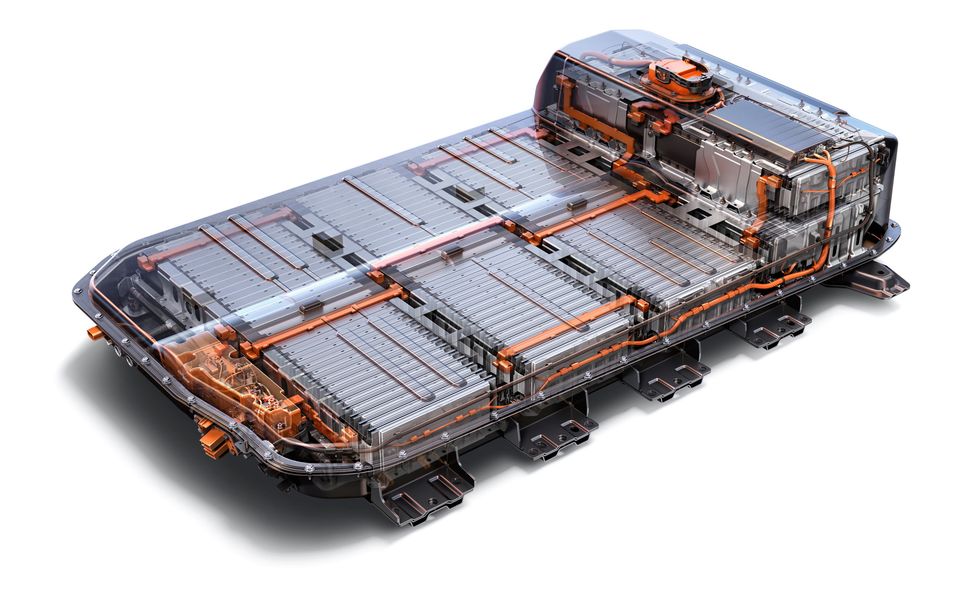

Electric Car Maintenance: All You Need to Know
Introduction.
Compared to their internal combustion counterparts, electric cars often require less maintenance, but they are still complicated machines that need servicing and upkeep. Internal combustion engines have much more moving components than electric motors. This implies that compared to their gas-burning equivalents, electric automobiles frequently require much less maintenance and might be cheaper to operate. EVs still require routine maintenance. This covers routine procedures like changing the cabin air filters, replenishing different fluids, and rotating the tires. Drivers of these battery-electric cars must also be aware of a variety of EV-specific services.
That’s as a result of EVs eliminating more than two dozen mechanical parts that would typically need routine maintenance. The cost of tune-ups, fuel replacements, cooling system flushing, transmission maintenance, and the replacement of the air intake, spark plugs, and drive belts is avoided by an EV owner. According to some sources, regular maintenance costs for electric car owners are around one-third less than those for conventionally powered vehicle owners.
An EV still need upkeep. To maintain the validity of the vehicle’s warranty, all automakers demand that owners perform a series of regular inspections and servicing. If you don’t stick to the suggested timetable, your car’s needed repairs could not be reimbursed.
Maintenance of Batteries

According to the National Renewable Energy Laboratory of the United States, if operated in mild climes, today’s EV batteries will have service lifetimes between 12 and 15 years. If regular usage in harsh settings occurs, this decreases to 8–12 years.
Nevertheless, throughout the course of their useful lives, EV batteries require essentially no maintenance. Nevertheless, there are some things that drivers may do to increase the battery pack’s useful life.
1. Avoid High or Low Temperatures
Batteries cannot withstand extremely high or low temperatures. To assist maintain the temperature of the batteries within reasonable ranges, automakers incorporate the appropriate auxiliary heating and cooling systems into the design of their electric vehicles (EVs).
2. Don’t intend to always use fast chargers
Fast chargers deteriorate battery packs more quickly than slow 120- or 240-volt charging, despite the convenience of speedy recharging. However, at this early stage of current EV development, it is unclear precisely how quick charging affects battery life.
Fast charging is obviously vital for a road trip and shouldn’t be avoided. However, it isn’t a good idea to purchase an EV only with intention of only using rapid charging, both from a financial and battery life viewpoint.
Fast charging can make EVs’ fuel expenses comparable to those of gas-powered vehicles by costing three to four times as much per kilowatt-hour of electricity as you would spend at home.
3. Avoid fully charging or draining the battery
When fully charged or when their energy is used up, batteries deteriorate more quickly. On the bright side, several manufacturers restrict charging to maximum capacity to help fight battery deterioration. Many automakers advise recharging to a capacity of 85 or 90% for regular usage, and most cars include settings to recharge to a level lower than 100%.
EV Maintenance compared Gasoline Vehicles.
Electric vehicles, like gas-powered vehicles, must maintain their powertrain components cool in order to keep everything functioning properly. Heat is produced during the conversion of electricity into mechanical energy. To keep components from overheating, some people utilize air, while others use a coolant or refrigerant of some kind.
1. Check the wiper fluid and cooling system
It could be required to clean or charge the system from time to time for EVs that utilize coolant or a similar substance. The owner’s manuals again for Ford Mustang Mach-E or F-150 Lightning advise inspecting the cooling level and power, in addition to the cooling system’s level and integrity, every six months. As part of normal maintenance, a Porsche Taycan owner’s handbook advises monitoring the coolant levels.
Whatever the source of your vehicle’s electricity, you’ll need to routinely top off the windshield washer fluid. The same holds true when changing the windshield wipers.
2. Maintain a close watch on the brake pads and fluid
Similar to gas automobiles, electric vehicles also use brake fluid to adjust their binders. Regardless of your vehicle’s engine, flushing and replenishing this fluid over regular intervals is an essential service. Ford advises replenishing the transmission fluid in the Mach-E & Lightning every three years, while the frequency of maintenance varies according on the car and manufacturer.
EV drivers also need to pay attention to their brake pads. The good news that an EV should use brake pads and rotors much more gradually than a gas vehicle. Praise the regenerative braking capability of electric motors, which enables the engine to slow the car by recapturing its kinetic energy.
Although mechanical brakes are still necessary for EVs, they are used less frequently, which means that the pads and rotors last longer.
Because an EV’s brakes aren’t used as frequently, Tesla’s maintenance plan calls for cleaning the brake caliper every 12 months and 12,500 miles in regions where salt is used to melt ice and snow. For long-term Model 3, that servicing cost us around $100 every visit, or about the same as an oil change for a gas-powered car.
3. Tread depth
Perhaps stating the obvious, but your EV’s tires do still need to be replaced. In fact, you could find that you need to change them more often. Part of the fault lies with EVs’ added weight (batteries are heavy).
For instance, compared to standard all-season tires, tires of Michelin Primacy MXM4 for long-term Tesla Model 3 had reduced tread depth. We believe that this is done to increase the range figure. However, this shortens the life of these all-season tires. After 30,000 miles, the ones mounted on our Model 3 needed to be replaced, costing us a staggering $1157.
Hybrids vs. EV Maintenance
Due to the presence of gas engines within hybrids and plug-in hybrid cars, their maintenance schedules resemble those of gas-powered vehicles more so than electric vehicles. However, these cars’ electric motors enable regenerative braking, which slows them down. This indicates that brake rotors & pads tend to last longer in hybrid or plug-in hybrid vehicles than in gas-powered automobiles.
Safety conditions
Commercially available electric-drive cars are subject to the same stringent safety testing than conventional vehicles marketed in the United States and must fulfill the Federal Motor Vehicle Safety Requirements. The exception is neighbourhood electric cars, which are only permitted on low-speed roads as required by state and local rules, and are thus subject to less strict criteria.
The high-voltage electrical systems of all-electric cars, PHEVs, and HEVs generally vary from 100 to 600 volts. Their car batteries are protected by sealed casings and are tested under situations like overcharging, vibration, high heat or cold, short circuiting, humidity, fire, impact, and submersion in water.
These cars include insulated high-voltage cables and safety mechanisms that turn off the electrical system in the event of an accident, according to the manufacturers. These cars include insulated high-voltage cables and safety mechanisms that turn off the electrical system in the event of an accident or short circuit, according to the manufacturers. All-electric cars are often more stable and less prone to flip over than conventional vehicles due to their lower center of gravity.
Emergency Preparedness and Response
Electric-drive car emergency response isn’t all that different from conventional vehicle emergency response. All large power lines are prominently marked with orange coloring, and all electric-drive cars are built with cutoff switch to disconnect the battery and stop the electric system. Manufacturers provide training for rescue workers and provide emergency response manuals for their vehicles.
Brakes
Regenerative braking is a feature of EVs. In other words, they recharge the car’s battery using the kinetic energy the automobile produces when braking. Because they are significantly gentler on the brake pads, these systems operate longer than traditional braking systems.
Maintenance needs to be performed by the owner every month
Verify and correct the tire pressure as necessary. Check for excessive tire wear. Verify the windshield wiper fluid level and top it off if needed.
1. 7000-mile interval
Rotate the tires, please. Battery, cabin heater, power inverter, auxiliary power, as well as charger module coolant levels should all be checked. Look for any fluid leaks. Examine the brakes. Look for damage by visually inspecting the steering, chassis, and chassis parts. Check for excessive wear, leakage, or damage on the drive shafts, half shafts, and power steering.
Verify the airbag (restraint) system. lubricate bodily parts (door locks). Look for wear, excessive effort, or binding on the accelerator pedal, and replace it if required. Check the gas strut (suspension) visually for wear, splits, or other indicators of damage. If there is a tire sealant, look at the expiration date.
2. Every two years
Use plain water to flush any corrosive substances from the underbody, such as road salt.
3. 15,000-mile interval
Wiper blades should be changed.
4. Around every 36,000 miles (ca. 57,936 km)
Cabin air filter replacement.
5. Around every 75,000 miles (ca. 120,701 km)
Replace the body lift supporting gas struts and/or the hood.
6. Five years in a row
Vehicle coolant circuits should be drained and refilled. Brake fluid should be changed.
7. Seven years in a row
Change the desiccant in the air conditioner. (In a mobile air-conditioning system, it collects and stores moisture to assist avoid corrosion.)
Nissan provides two different maintenance programs for the Leaf.
Schedule 1 is designed for more challenging operating circumstances, such as frequent quick journeys of less over five miles in comfortable conditions or ten miles in freezing conditions, quit driving in hot conditions, slow driving over long distances, continuing to drive in dusty environments or on bumpy, muddy, or salt-spread roads, or employing a car-top carrier.
Schedule 2 only applies to highway driving under temperate weather conditions, however, it requires less regular maintenance. The majority of Leaf owners will need Schedule 1 servicing, to put it simply.
This boils down to various routine mechanical inspections, tire rotations every six months and 7,500 miles, and cabin air filter replacements every twelve months or 15,000 miles, much as with the Bolt. Additionally, the coolant should be changed every fifteen years or 120,000 miles, and the hydraulic fluid should be changed each Twenty four months or 30,000 miles.
Now, just because an electric car can afford less maintenance doesn’t imply it is invulnerable. Owners of electric vehicles (EVs) will ultimately need to change the tyres, have the brake serviced, and may also need to repair hoses, headlights, taillights, steering and suspension parts, etc. A wheel adjustment will be required, like with any other kind of vehicle, if the automobile pulls with one side or shows signs of uneven tire wear.
The battery pack, by far the most expensive part of an EV, is another factor to take into account. All batteries used in electric vehicles will eventually deteriorate with time and lose part of their capacity to hold a full charge. Earlier EVs that could only manage 80 miles (ca. 129 km) on a single charge had more of a problem than today’s generation of 200-mile-plus versions.
Only a small number of the electric automobiles produced up to this point had apparently deteriorated to the point that they required to be replaced. However, if you have an EV for a long enough period of time, you’ll notice a drop in its range. If it becomes a problem, you may have to replace the rechargeable battery or trade the car in for another one.
How much does it cost to maintain an electric vehicle?
1. Significant savings
According to several overlapping studies, the cost of maintaining an electric city automobile is 20–35% less than that of a comparable combustion-powered vehicle*, where the cost of repairs, service, and change the oil can significantly increase. When it comes to electric vehicles, the absence of worn parts that need to be replaced on a regular basis and the lack of significant engine repairs can be used to explain these noticeable variations in maintenance expenses.
These benefits are applicable to everyone and are made much more clear for frequent drivers. Businesses, for instance, have compelling reasons to pick electric automobiles or utility vehicles for their fleets of corporate cars.
Depending on the kind of vehicle, method of purchase, and intended use, fleet maintenance accounts for 7–12% of the TCO (Overall Cost of Ownership).
2. Less inspections than usual
A licensed specialist should inspect your electric automobile every 30,000 kilometers, as opposed to every 15,000 kilometers for just a gasoline-powered car and every 20,000 km far for a diesel. However, following their fourth birthday, all-electric and hybrid vehicles in the European Union must undergo a required examination every two years.
As per their condition and mileage, replacing the brake discs and tires will add to the cost of maintenance. The cost of maintenance also includes steering, suspension, and shock absorbers, depending on how frequently the car is used.
To just not mention the money saved “at the pump,” or more appropriately, “at the plug”! All of this clarifies the financial benefits of operating an electric car and enables drivers to determine the precise saving that can be achieved with this model.
Who should do an electric vehicle’s maintenance?
Not all auto repair shops are permitted to work on electric cars. A competent specialist must inspect and repair electric cars. A safety method is required due to the high amperage and voltage in the drive systems (between 400 and 700 volts), which allows for the ideal circumstances for repair to be performed.
Additionally, it is highly advised to engage a licensed technician to taking care of your car when having it serviced or even for normal maintenance operations. To work on electrics, they must be qualified, and the certification needs to be updated yearly.
Manufacturers provide kits with maintenance included for added convenience. As a result, you may be sure to get the best components quickly and as needed. The whole Renault European network has been educated on all the specifics of electric cars and has a decade’s worth of electric vehicle experience.
FAQ:
1. What upkeep is required for an electric vehicle?
Compared to conventional cars, all-electric vehicles often require less maintenance even though: The battery, motor, and related electronics require little or no routine maintenance. There’s many fewer fluids that need routine maintenance, like engine oil.
2. How frequently should electric vehicles be maintained?
Vehicle systems and tire rotation checks must be performed twice a year on EVs. These support the lifetime of the EV and optimal battery performance. After the manufacturer’s warranty has expired and the EV has been in use for more than 8 to 10 years, the battery will likely need to be replaced at some time as well.
3. How much does an electric vehicle cost to maintain?
The anticipated planned maintenance expenditures for an electric car average $0.06 cent per mile, compared to $0.10 for a standard ICE-powered vehicle, according to the government Office of Renewable Energy and Energy Efficiency.
Facebook
Twitter
LinkedIn
Pinterest
Tumblr
Categories
- Abarth (1)
- Acura (1)
- Apple (1)
- Audi (5)
- BMW (3)
- Buick (1)
- Buying Guide (15)
- BYD (2)
- Cadillac (2)
- Car News (41)
- Car Reviews (1)
- Chevrolet (2)
- Citroen (2)
- CUPRA (1)
- EV Basic Info (14)
- Explore EVs (121)
- Fiat (1)
- Fisker (4)
- Ford (3)
- Genesis (3)
- GMC (3)
- Honda (4)
- Huawei (1)
- Hyundai (6)
- Jeep (2)
- Kia (7)
- Lexus (1)
- Lotus (3)
- Lucid Air (2)
- Maintenance Tips (2)
- Maserati (1)
- Mercedes (4)
- Mini (1)
- NIO (4)
- Nissan (2)
- OPEL (1)
- Peugeot (2)
- Polestar (6)
- Porsche (3)
- Ram (1)
- Renault (1)
- Rivian (6)
- Rolls-Royce (1)
- Scout (1)
- Sono (1)
- Subaru (1)
- Tata (1)
- Tesla (6)
- Toyota (3)
- VinFast (5)
- Volkswagen (4)
- Volvo (5)
- Xiaomi (1)
Recent Posts
Related Info
Popular Tags
24 Hour Series
2024 Acura ZDX EV
2024 Chevrolet Silverado EV
2024 Ford F-150 Lightning
2024 Genesis Electrified GV70
2024 GMC Hummer EV Pickup
2024 GMC Hummer EV SUV
2024 Honda Prologue EV
2024 Hyundai Ioniq 6
2024 Kia EV9
2024 Kia Niro EV
2024 Lexus RZ
2024 Nissan Ariya Nismo electric SUV
2024 Polestar 2
2024 Rivian R1S
2024 Rivian R1T
2024 Subaru Solterra EV SUV
2024 Toyota bZ4X
2024 Toyota Mirai
2024 Toyota RAV4 Prime
2024 Volkswagen ID 4
2025 Jeep Wagoneer S
2025 Porsche Taycan
2025 Volvo EX90
Audi Wins 2024 Dakar Rally
BYD Qin L Exposed
Citroen e-C3 2025
Electric Vehicles in Recession
Federal Government Orders recall
GMC Sierra EV Denali Edition 1
Huawei Alpha T5
Hyundai Ioniq 5 2024
kia
Kia Niro
mi su7 price
Music Platform Melon
Porsche Macan EV
Renault 5 E-Tech EV In 2024
Scout Motors EV
Sell Used Electric
Tesla
Tesla Model Y 2024
Tesla Recalls 1.62 M Vehicles
Toyota
Xiaomi SU7
Related posts

December 13, 2023
Hello, dear fans! Today, we will discuss an interesting and practical topic: how to transform lithium battery electric...
EvCarsInfo provides all latest, popular, upcoming, Electric Vehicles News, Reviews and information.We are mainly focused on the Buying Guide, Car News, Car Reviews, Upcoming Cars, ETC.






